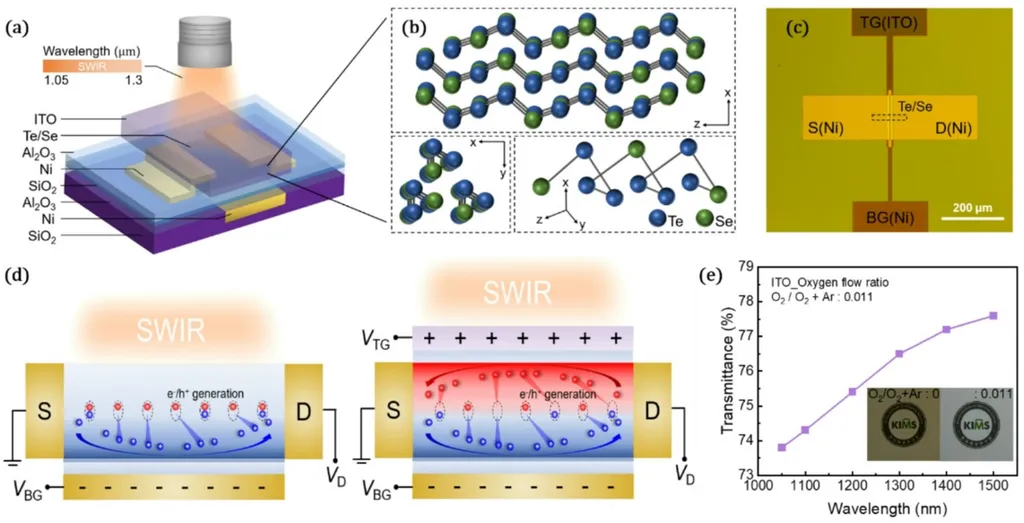In a significant stride towards enhancing maritime technologies, researchers have developed a novel photodetector that could revolutionize night vision, remote sensing, and optical communication systems. The study, led by Seungwoo Baek from the Energy and Environment Materials Research Division at the Korea Institute of Materials Science (KIMS), introduces a cost-effective and high-performance alternative for short-wave infrared (SWIR) photodetection.
The research, published in the journal *Scientific Reports*, focuses on a Te0.7Se0.3 alloy thin film-based dual-gate phototransistor. This innovative device addresses several challenges faced by conventional SWIR photodetectors, such as high fabrication costs and environmental concerns. By using a Te-Se alloy thin film as the active channel material, the researchers achieved both SWIR absorption and a low off-current state in thin film transistors (TFTs).
One of the key features of this new device is its dual-gate architecture, which includes a top electrode made of Indium Tin Oxide. This material boasts excellent SWIR transmittance, enhancing charge carrier separation through an intrinsic built-in field. The device demonstrates impressive SWIR detection performance, with a responsivity of 559.3 A/W at a 1300 nm wavelength range.
Seungwoo Baek explained, “The dual-gate engineering not only improves the photodetection performance but also ensures cost-effectiveness and environmental sustainability.” This breakthrough could have profound implications for the maritime industry, particularly in areas requiring advanced imaging and sensing capabilities.
For maritime professionals, the enhanced SWIR photodetection technology could lead to improved night vision systems, enabling better navigation and safety during low-visibility conditions. Remote sensing applications could also benefit, allowing for more accurate monitoring of marine environments and detection of underwater objects. Additionally, the technology could enhance optical communication systems, facilitating more reliable data transmission in maritime operations.
The commercial impact of this research is substantial. The cost-effective nature of the proposed device makes it an attractive option for various maritime applications, potentially reducing the overall cost of advanced imaging and sensing technologies. Furthermore, the environmental benefits of using a Te-Se alloy could align with the maritime industry’s growing focus on sustainability.
As the maritime sector continues to embrace technological advancements, the development of this SWIR photodetector represents a significant step forward. The research not only addresses current challenges but also opens up new opportunities for innovation in maritime technologies. With the findings published in *Scientific Reports*, the journal known in English as *Nature Scientific Reports*, the scientific community and industry professionals alike can explore the full potential of this groundbreaking technology.

